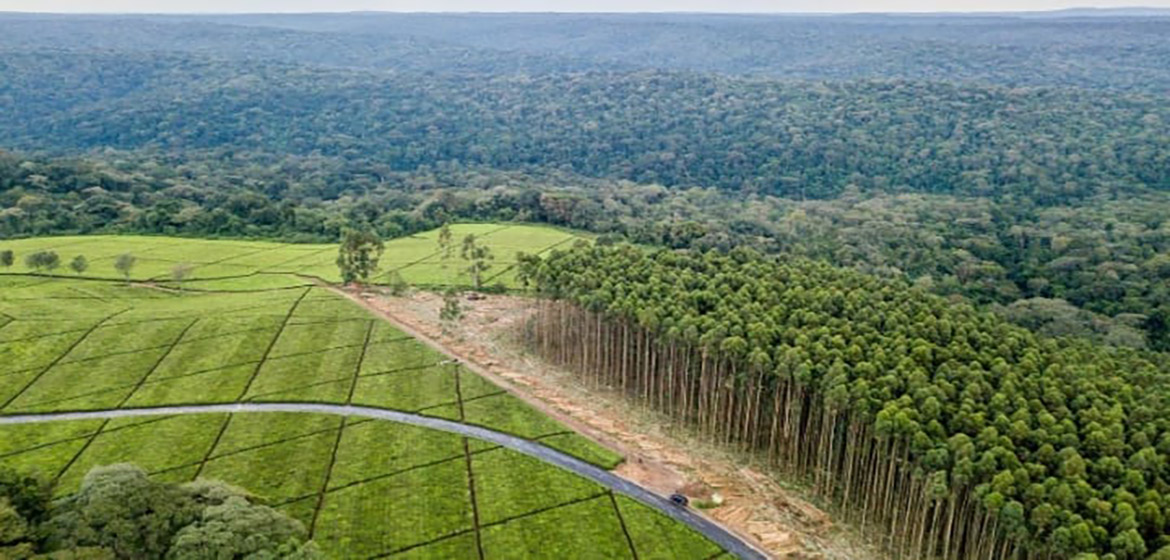By Stephanie Keene, Jessica Troell
As rising pollution levels, accelerating climate change, and population growth accumulate pressure on the world’s freshwater resources, there has never been a greater need to legally secure the freshwater rights of the Indigenous peoples and local communities — including vital watersheds that sustain healthy aquatic and terrestrial ecosystems.
The importance of securing the collective land and forest tenure rights of Indigenous and local communities has gained broad acceptance across forestry, land, and development sectors. However, this advancement has not yet included communities’ freshwater rights, despite clear ecological linkages between land and freshwater resources. With forecast to experience water stress by 2025, legally recognizing and securing Indigenous and local communities’ water tenure rights, which are essential to their livelihoods and stewardship of freshwater resources, must be an urgent priority.
Worldwide, up to Indigenous and local community members use traditional and acquired knowledge to nurture delicate ecological interdependencies between terrestrial and freshwater ecosystems within their territories. Indigenous and local communities’ governance of natural resources is anchored in their special relationships with their territories, and their capacity to manage and preserve these resources than governments is well-documented. This makes them vital partners in combating climate change, protecting biodiversity, and safeguarding all people’s rights to a clean, safe, and healthy environment.
However, the tremendous potential of communities’ territories to provide essential ecosystem services depends on securing their rights to use, make decisions about, and protect their lands and territorial waters. Unlocking this potential requires a departure from traditional, sector-based approaches to natural resource governance that fail to heed the ecological and legal linkages between community lands and freshwater resources.
A by the and the shows that nearly two-thirds of legal frameworks recognizing community freshwater rights render those rights dependent on the recognition of community land rights. Indeed, this legal “land-water nexus” is the only basis for recognition of communities’ freshwater rights under national laws in Cambodia, India, Liberia, and Mexico.
The legal land-water nexus poses both challenges and opportunities. Legal frameworks characterized by this nexus provide comparatively stronger protections for communities’ freshwater rights than those predominantly relying on water laws. This shows that land and forest laws are often essential to communities’ protection and realization of their water rights, and that water laws commonly ignore the unique needs and entitlements of Indigenous peoples and local communities.
The same analysis found that only a third of legal frameworks recognize Indigenous and local community women’s rights to freshwater and that these legal protections for women, while meager, are primarily found in frameworks with a land-water nexus. This echoes findings in demonstrating scant recognition for women’s rights to community lands, and underscores the critical need for governments to prioritize gender-sensitive, harmonized recognition of community-based resource rights throughout water, forest, and land laws.
Despite the clear linkages between communities’ land, forest, and freshwater tenure rights, highlights significant inconsistencies across sectoral laws, exposing communities and community women to injustice while jeopardizing their sustainable management of the freshwater resources on which all depend.
The ongoing conflict over Kenya’s Mau Forest Complex demonstrates the human and environmental costs of ignoring linkages between communities’ land, forest, and rights. The Mau Forest Complex is the ancestral home of the Indigenous Ogiek people, Kenya’s largest water drainage basin, and the country’s most significant — mountainous forests from which Kenya’s major rivers originate.
Kenyan government officials have , and have the Ogiek’s displacement as necessary to protect Kenya’s water supply. In 2017, the Ogiek won a before the African Court on Human and Peoples’ Rights, which found the government’s actions unlawful given the Ogiek’s valid ancestral forest ownership claims, their capacity as Indigenous peoples to effectively conserve their resources, and the fact that the Mau Forest’s degradation largely stems from commercial logging by non-Ogiek persons carried out under the government’s watch.
Although the government commissioned a task force to guide the implementation of the African Court’s decision in 2018, has not commenced and the task force’s recommendations remain undisclosed. Most tragically, the government has continued to displace the Ogiek, demolishing their homes, destroying their crops, and clinging to the that the presence of humans is antithetical to effective conservation. This approach will likely perpetuate the Mau Forest’s degradation while condemning the Ogiek to hunger and displacement during a .
The many conflicts embroiling Indigenous and local community territories worldwide underscore that recognizing and respecting communities’ land and freshwater resource rights are high-stakes priorities for communities and the planet. To close the unsustainable gap between communities’ extensive territorial claims and the, governments should:
• Accelerate legal recognition of all rights necessary for communities to effectively use and govern their waters and lands, prioritizing communities’ territorial rights to enforce their water rules against third parties; exclude third parties from negatively impacting their territorial waters; and exercise due process rights to protect waters from domestic and transboundary threats.
• Support inclusive community-based resource tenure by strengthening legal protections for community women’s specific rights to use and govern both freshwater and terrestrial resources.
• Remedy legislative gaps and inconsistencies across sectoral laws that hinder the realization of these rights.
• Empower communities, including women, to understand and realize the suite of community-based water rights recognized under formal law.
• Integrate rights-based approaches into all decisions concerning natural resource tenure and governance.
• Governments spearheading national reforms,, and making other must understand that without the political will to scale-up collaboration across the freshwater, forest, and land sectors, they remain ill-equipped to meet the essential demands of Indigenous and local communities. Ultimately, it’s these communities who will play a central role in any successful effort to solve the world's most pressing conservation and climate challenges.
Source:
Related to SDG 15: Life on land and SDG 16: Peace, justice and strong institutions



